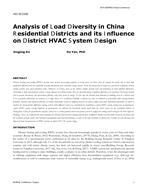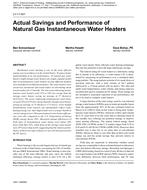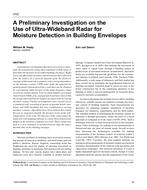Weatherization in residences decreases the air exchange rate to reduce the energy needed to maintain thermal conditions. Consequently, theresidence time of indoor air increases, increasing the importance of indoor emissions on indoor pollutant concentrations and allowing more time forreactions and the formation of associated products. One important indoor source is when ozone reacts with reactive organic compounds (ROG) togenerate secondary organic aerosol (SOA), which are liquid airborne particles comprised of low vapor pressure, condensed reaction products. Othertypes of organic aerosol (OA) are emitted indoors as well, due to sources such as cooking or smoking. This study assessed and quantified theimpacts of residential environmental and building parameters on SOA and total OA concentrations to better understand consequences ofresidential weatherization. To do so, a model was created predicting indoor SOA formation from the oxidation of 66 ROGs with the volatilitybasis set approach and OA from other indoor emissions, and this model was applied to real data from residences for input parameters. Mostinputs were modeled as probability distributions and were varied stochastically in a Monte Carlo approach to predict a distribution of results.Decreasing air exchange rates increased SOA and OA concentrations, since indoor emissions dominated these pollutant sources. The results wereused in a regression to determine their sensitivities to model inputs and to determine how to offset the increases in SOA and OA due toweatherization. Increasing filtration could offset much of the increases, but not all due to system runtime limitations. Reducing d-limoneneemissions had the potential to offset SOA and OA increases over the entire studied air exchange rate range.
Citation: IAQ Conference: IAQ 2013: Environmental Health in Low Energy Buildings
Product Details
- Published:
- 2013
- Number of Pages:
- 6
- File Size:
- 1 file , 1.5 MB
- Product Code(s):
- D-2013IAQConf-44


